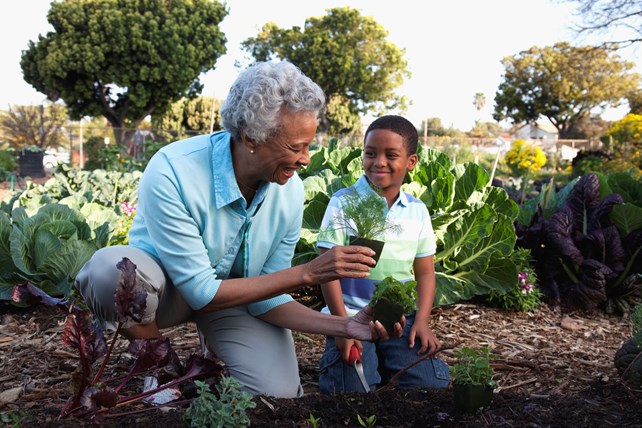Discover how to perform everyday tasks using MyMedicare.gov, the official Medicare online user portal, including opening an account, logging in and using the Blue Button.
Read moreSpeak with a licensed insurance agent
Speak with a licensed insurance agent
Compare plans today.
It can be a joy to nurture something and watch it grow, but for some, it may feel like this is a talent just for the greenthumbs and not for everyone. Don’t be discouraged! Everyone can learn how to be a great botanist in their own backyard. You just need the tools to get started.

Planting a home garden can be a life-giving task as you give back to the earth. It can also enrich your diet if you plant vegetables and herbs. A home garden holds a variety of benefits, but it can feel daunting to get started. Here are a few tips and tricks to make your own flourishing home garden.
Pick plants, herbs or vegetables that you love! Maybe it is a particular bloom that always makes you smile, or a vegetable you love to grill in the summer. For seniors, a home garden is a great opportunity for you to plant vegetables that are good for your health. Plant vegetables that are rich in vitamins like broccoli or carrots or high in calcium to promote strong bones like spinach or kale.1 However, if you plant something that you won’t eat, it will be hard to be passionate about taking care of it as it grows. Make sure to pick things that you enjoy!
Most fruits and vegetables need full sun, so pick an area of your backyard that gets at least five hours of direct sunlight every day.2 Also bear in mind how you will care for your garden. If it is on a slope or one side is inaccessible, it may cause issues when you are weeding, watering or picking the crops. Choose an area that is easy for you to access at several different points. Finally, if you have rambunctious grandchildren, pick a spot that will not be trampled by running feet or hit by passing baseballs. When you consider all these things, you will have a perfect spot for your garden to thrive.
To get started cultivating your soil and planting your seeds, you must first invest in basic gardening tools. Some tools you will need are: a garden hose, dirt rake, garden hoe, garden shovels, gloves and maybe even a kneel pad to assist your knees when planting. Once you have the proper tools, you will be well on your way to planting and maintaining your garden.
For seeds to take root and flourish, they need nutrient rich soil. Test the soil in your backyard first. Do you have sand, rock, clay, silt, or a mixture of these types of soil? Remove the rocks if you can and start layering silt soil where you intend to plant. Till and strengthen the soil with plant organic matter. This is where a compost pile may come in handy! Once your soil is ready, it is time to plant.
All your preparation work is about to pay off! This is the moment you have been waiting for, getting to plant your seeds. Each vegetable, herb, or plant may have instructions for how deep to plant and how far apart so that the roots are able to extract the nutrients they need without overwhelming their neighboring plants. Bear these instructions in mind as you plant. If you are transplanting plants into your soil, break apart the roots a bit as they most likely got tangled inside the pot. Dig a shallow hole in your soil and place the plant inside. Pack dirt up and around the plant so it is securely in place.
This step is when your patience is tested as you wait for things to grow while putting in consistent effort to nurture your garden. The seeds are buried, but that does not mean the work is over. Most plants need one inch of water per week during their growing season, so monitor how much it rains and how much daily water your plants will need to thrive.2 Weed regularly so they do not overcome your plants roots or interfere with the amount of sunlight your plants need. If you put in the effort, your plants will begin to grow!
You have put in the effort to plant, love and nurture your garden. Now you should be able to enjoy the harvest! If you planted flowers, the beautiful blooms are your reward. If you planted vegetables, then you can reap the harvest and enjoy them as a snack or incorporating them into tasty dishes.
Planting a home garden takes a lot of time, patience and effort, but the reward is worth it! Whether you plant flowers or vegetables, a home garden can delight you with the wonders of spring and provide yummy, nutritious items to fill your kitchen. Happy planting!